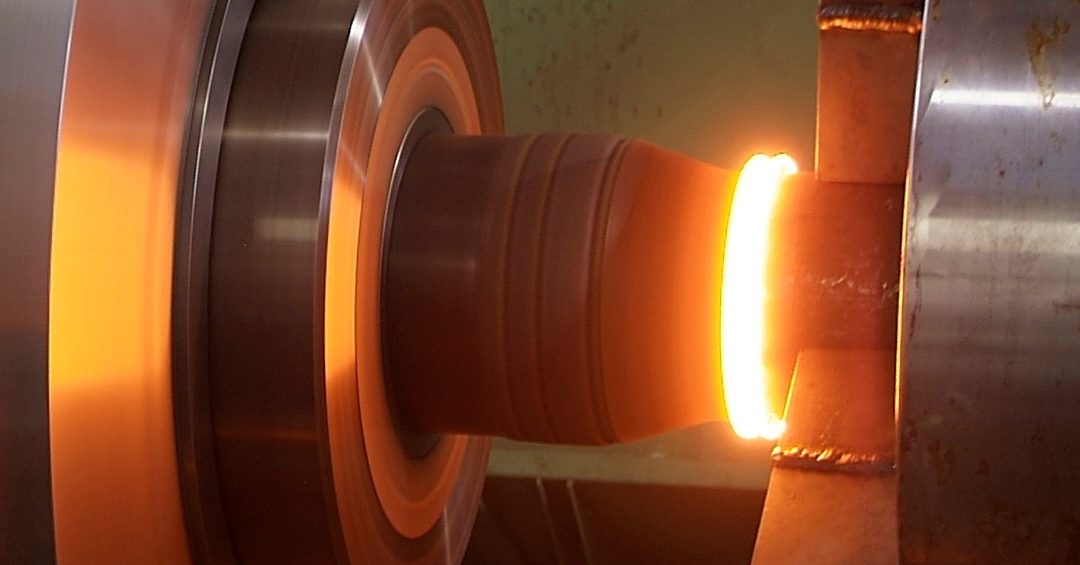What the heck is friction welding (FRW) you might ask? Well, it works about like it sounds and can produce some incredibly strong welds. The main component behind this process, as you may have guessed, is friction.
This technique originated in England in 1924. However, the process was not introduced in the U.S. until 1960, with rotary friction welding emerging as the oldest of the friction methods and the most commonly used.
Friction welding differs from many traditional welding techniques in that it is a solid-state process—meaning it does not require a filler metal to produce the weld. A weld that requires a filler metal is known as fusion welding. The friction process produces a weld when two or more materials, rotating or moving relative to one another, are brought into contact under extreme pressure to produce heat and are forged or meshed together into one solid form. This takes place in two distinct stages: the friction stage and the forge stage.
Check out the video below to see how this process works:
A friction weld is considered a stronger weld than a fusion weld because the entire face of each material is forged together as opposed to a weld that was only applied to the outer surfaces. This can lessen the chances of running into other defects such as porosity and it produces minimal distortion.
Types of FRW
Rotary FRW– One material is rotated at a high speed into another stationary piece creating high pressure. Sub types of Rotary Friction welding:
- Inertia Friction Welding
- Direct Drive Welding
- Hybrid Welding
Linear FRW- Similar to rotary where two pieces are joined together, but in a grinding side to side motion.
Friction FRW- A rotating tool creates heat and friction along the joint of two metals. It mechanically intermix the two pieces of metal, forging the hot and softened metal ( think of joining two pieces of clay)
Parameters of FRW
Though friction welding sounds like a simple process at its core, there are several parameters that must be controlled for an optimized welding process. These parameters include friction contact time, forging time, forging pressure, time of increased pressure, and friction pressure. To prevent overheating, friction pressure and friction time must be correctly controlled.
When done correctly, a friction weld will be free of porosity and cold lapping. The challenge, like with other welding techniques, is one of temperature control. Too cold a temperature will result in a poor bond. Too hot a temperature and the weld could be fragile and subject to cracking. Evaluating a weld’s integrity below the surface is crucial, and in the case of friction welding, ultrasonic inspection is used.
Advantages of FRW
One of the main advantages of friction welding is that it requires a much lower energy requirement than traditional welding processes.
Other advantages include:
- Minimal material loss during friction and forging making it cost effective
- No filler metal required
- Doesn’t produce spatter
- Cooling time is short because the heated material is minimal, allowing this process to occur at high speeds
- It can be easily automated
- Does not cause excessive waste
- Parameters are easily controlled making it very efficient
- Can weld most common metals
Disadvantages of FRW
Just like other types of welding, friction welding does come with some disadvantages. The main disadvantage of friction welding is the geometrical limitations of the material that can be used. Many types of welding angles can be difficult to achieve with friction welding.
Some other disadvantages include:
- Only works with certain joints
- Preparing the workpiece can be difficult
- Equipment is very large and heavy
- High set up cost
- Lack of human control
Common Industries for Friction Welding
Nearly all industries make use of the advantages of friction welding. The process is used for high -volume production applications when solid-state joining is a preference or the only option for a specific application. In addition, high overhead costs are replaced with higher production rates and lower labor requirements. Friction welding is used in automotive, aviation, construction, machine production, and many more industries.
To learn more about the welding profession, please visit the American Welding Society’s page at https://www.aws.org/home.



